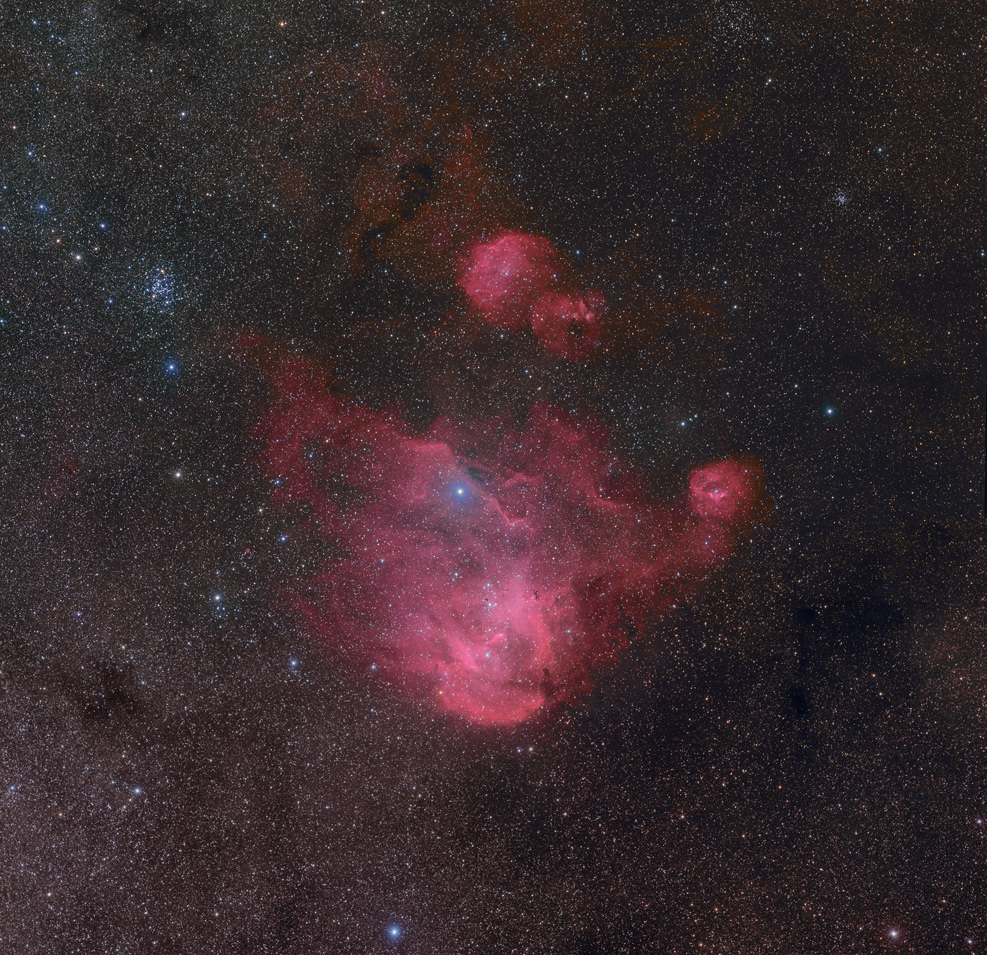
Running Chicken Nebula, IC2948: This is a two-panel mosaic of this large emission nebula/star-forming region; it may not be clear why this nebula has the name it does, but if you ignore the blob on top of the main nebula, you can see the shape of a legless chicken flapping its wings and running toward the right of the frame. The red color of the nebulae is a result of the hydrogen gas surrounding the bright new stars being ionized by the stars. Some of the objects in this field are labeled on an image you can reach by clicking on the image above: IC2948 is the main nebula; IC2944 generally is said to be the star cluster inside IC2948, but that's not entirely clear; Lambda Centauri is a bright (mag 3) star not associated with the nebula (it's much closer to us than the nebula); GUM 39, Gum 41 and IC2872 are associated emission nebulae; NGC3766, IC2714 and Melotte 105 are star clusters in the field (but not associated with the nebulae); a nice little (literally) bonus is the tiny planetary nebula PK294-0.1; the small (a light year or so acroos) dark lumps in the nebula (easier to see in the pure Ha version than in the color version) are "Bok globules," although these particular Bok globules are called "Thackery globules" after the man who discovered these particular Bok globules. This beautiful nebula is very close to the spectacular "Eta Carinae Nebula." Estimates of its distance from Earth vary, but tend to be around 6000 light years; This field is perhaps 100 light years across.
Copyright 2013 Mark de Regt